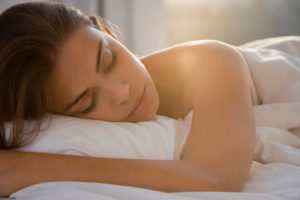Recent research reveals the restful benefits of craniosacral therapy
 http://spiritualityhealth.com/articles/craniosacral-therapy-better-sleep#.WL2vwsJXtFQ.facebook
http://spiritualityhealth.com/articles/craniosacral-therapy-better-sleep#.WL2vwsJXtFQ.facebook
Craniosacral therapy is known to treat a myriad of problems including sleep disturbances. Honolulu based craniosacral therapist Valerie Collins explains that, “the light-touch approach of craniosacral therapy helps to calm the body by enabling the client to enter into a state of deep relaxation, similar to meditation.” But it doesn’t just help induce relaxation and improve sleep; it’s touted as healing everything from headaches to learning disabilities. A recent study published in the Journal of Integrative Medicine found it could help regulate the autonomic nervous system, part of the body responsible for our ability to rest and respond to stress. Wanda Girsberger, a craniosacral therapist in Zurich, Switzerland and one of the researchers on the study, illustrates its potential health benefits on a woman who sounds a lot like me–stressed out and consequently exhibiting sleep, concentration and digestion difficulties. “By regulating her autonomic nervous system through craniosacral therapy, her body could enhance its functions in digestion, relaxation and cause clearer thinking. The regulation of our autonomic nervous system is mandatory for our health…the interplay of activity and relaxation allows us to grow, heal, regulate our moods, and more. Thus it appears that CST (craniosacral therapy) can be supportive for all kind of symptoms and problems and support us in different aspects, physically…and emotionally.”
Craniosacral therapy has been healing patients for a long time. Osteopath William Sutherland is often credited for the creation of cranial osteopathy in the thirties. John UpLedger later adapted it and the name was changed to craniosacral therapy in the seventies. Prior to Sutherland’s controversial discovery, cranium bones were thought to be fixed and immobile. Michael Kern is a craniosacral therapist, osteopath and naturopath with a practice in London and has been teaching Craniosacral Therapy since 1987. He says, “One of the things Sutherland found very early on was that these subtle rhythms were not just in the head but throughout the whole body.” Sutherland detected these breath-like motions through core components in the body including the skull, central nervous system, fluid and tissues that surround the central nervous system, and the sacrum at the base of the spine. He came to the conclusion that free movement of these structures indicated health and well-being, but that any tension, restriction or inertia may lead to illness and disease. Kern says, “In treatment, by restoring the expression of these rhythmic movements, you restore basic health, both physical and mental.”
While all this sounds purely cerebral, there is another component of the therapy that remains a mystery. As I lied down, fully clothed, I was highly aware of the practitioner cradling my head and lightly touching my feet. But I couldn’t explain the involuntary muscle twitches or the deep, heavy sigh that seemed to be released from deep within my body.
While research is limited and predominantly anecdotal, for me at least, I’m convinced of its restful benefits. I’m no longer dependent on a boring read to lull me to sweet slumber. Like someone turning off the switch in my mind and body, I’ve since been able to miraculously and effortlessly fall asleep.
